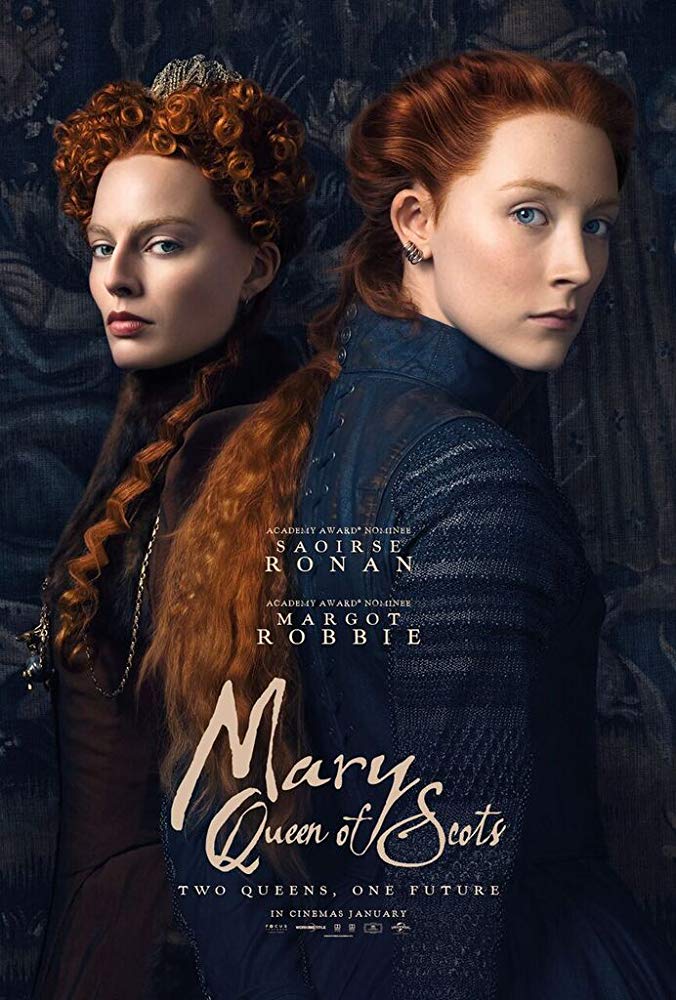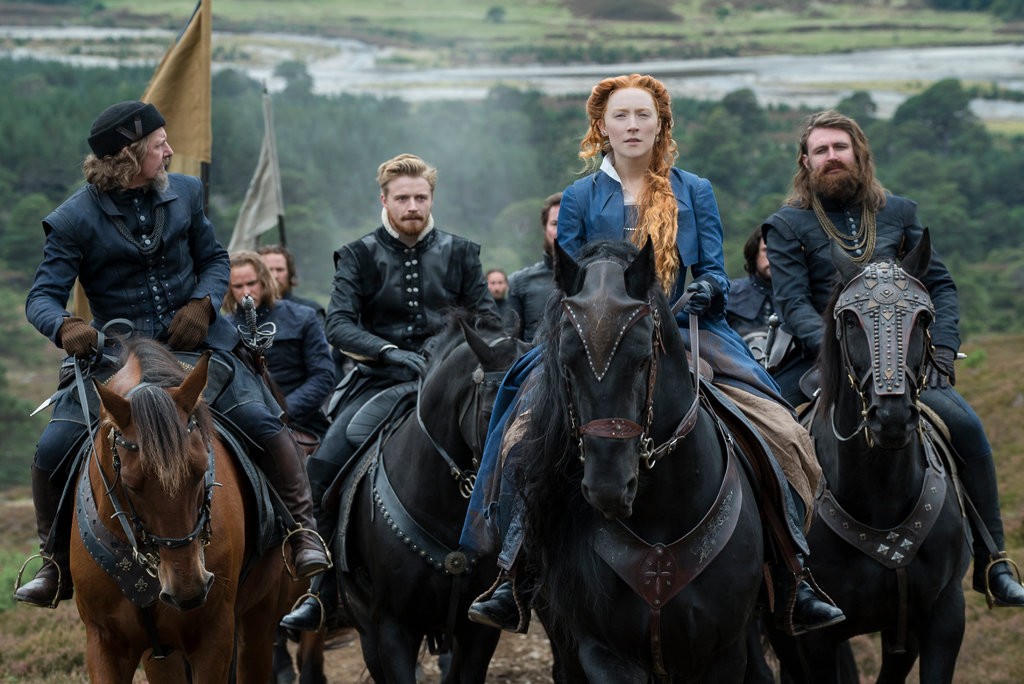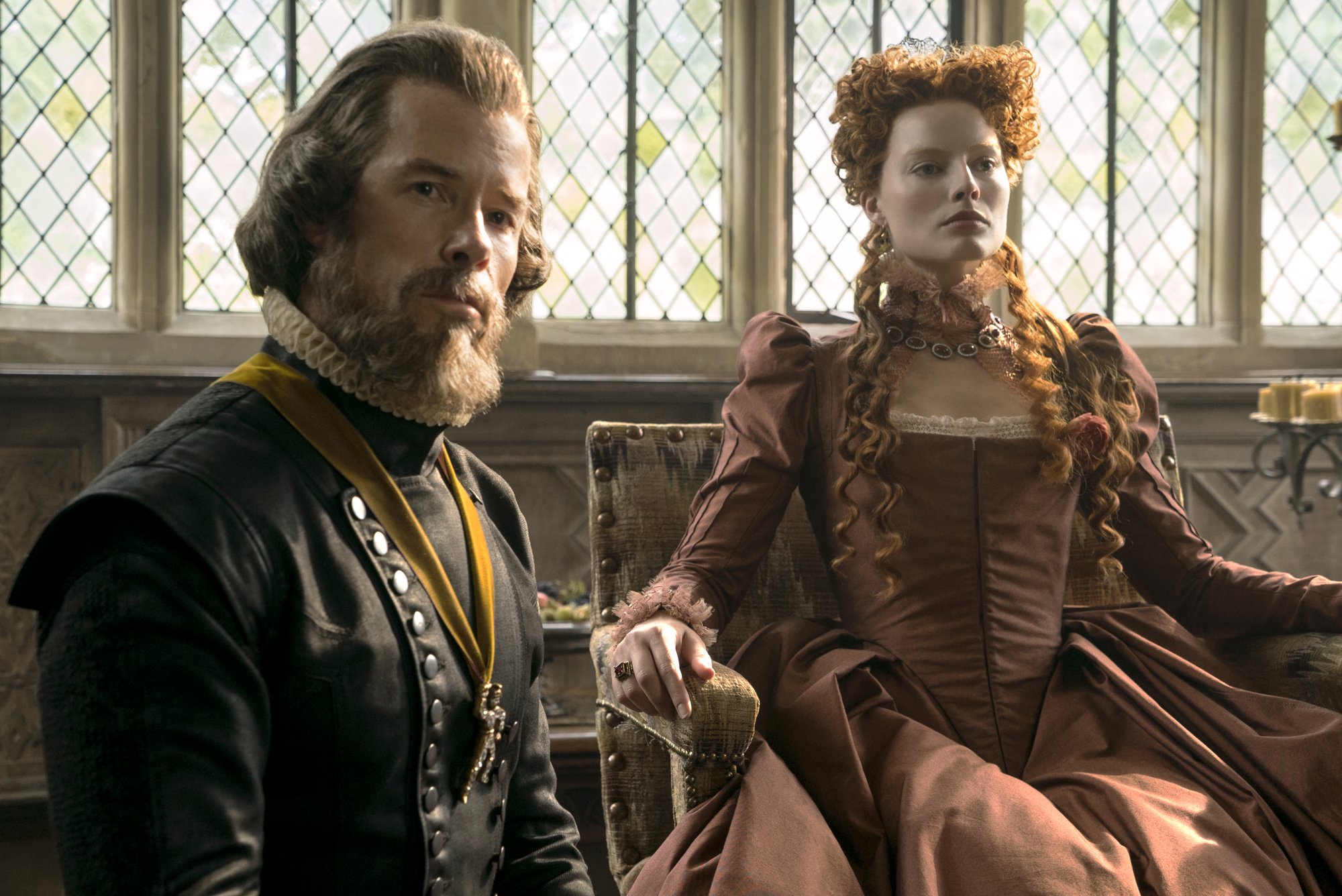
The story is familiar. We’ve seen it many times on both film and TV. The queens are familiar. We’ve seen them being embodied by many actresses we love and admire. Now it’s time for Saoirse Ronan and Margot Robbie to play Mary and Elizabeth I in Mary, Queen of Scots. Familiarity can breed contempt. We’ve seen this before so why do we need another version? But familiarity can also help us absorb a story when we know the beats of its narrative. We can take in the performances, the costumes, the setting and not worry about following the plot. Director Josie Rourke and screenwriter Beau Willimon understand that they need to freshen up the material, give it a new spin. And so they try.
Their story concentrates squarely on Mary and starts with her return to Scotland from exile in France, threatening Elizabeth’s reign because of her strong claim to the crown with Elizabeth being unwed and childless...
The film is about the machinations of the men in Mary’s court (James McArdle, David Tennant, Jack Lowden, Martin Compston) and in Elizabeth’s court (Guy Pearce, Adrian Lester, Joe Alwyn) to keep the two women apart, weakened and enemies in a attempt to usurp their powers. What men do to hold on to their power.

The first attempt to modernize this story is in the casting. There’s room for Lester and Gemma Chan to play roles that traditionally would not go to actors of color. However they are not lead parts or even crucial roles for the film's plot but rather at the periphery of the story. The exception is Ismael Cruz Cordova who shines as Mary’s friend David Rizzio. He’s central to the most harrowing element of the plot against Mary.
The second attempt to modernize is in the tone. This is a grittier, sexier and dirtier portrayal of Mary than we’ve seen before. Ronan rises to the challenge and her scenes with Lowden (playing her second husband Lord Darnley), with Compston (as her trusted adviser Lord Bothwell) and the aforementioned Cordova have palpable chemistry and raw emotion whether it’s love, hate or betrayal they are playing. Whatever it is, they go at it with fervor. This star turn is further proof of Ronan’s immense talent, she is able to hold attention as Mary with vigor and vulnerability.

The film is less successful in its portrayal of Elizabeth. The point being made in her scenes is about what women sacrifice to retain power. That manifests itself in repeated scenes where she scolds her court of men for not listening to her because she’s a woman. Though it's a crucial message to impart, you lose dramatic urgency with repetition. That doesn't give Robbie many notes to play but she's poignant when Elizabeth is weakened after getting disfigured with chicken pox.
Rourke, who is a very successful theater director, makes a promising leap to film. The battle scenes may be wobbly and small scale, but her work with the actors is anything but - particularly in the climactic fictional meeting between Mary and Elizabeth. The film has been leading up to it for all its running time, and when it comes it’s as sensational as you’d hoped it would be. Unfortunately the journey to get there is less thrilling. Despite attempts at freshening up the material, it comes off stale, another plodding historical drama that is far too familiar to be truly exciting.
Grade: C